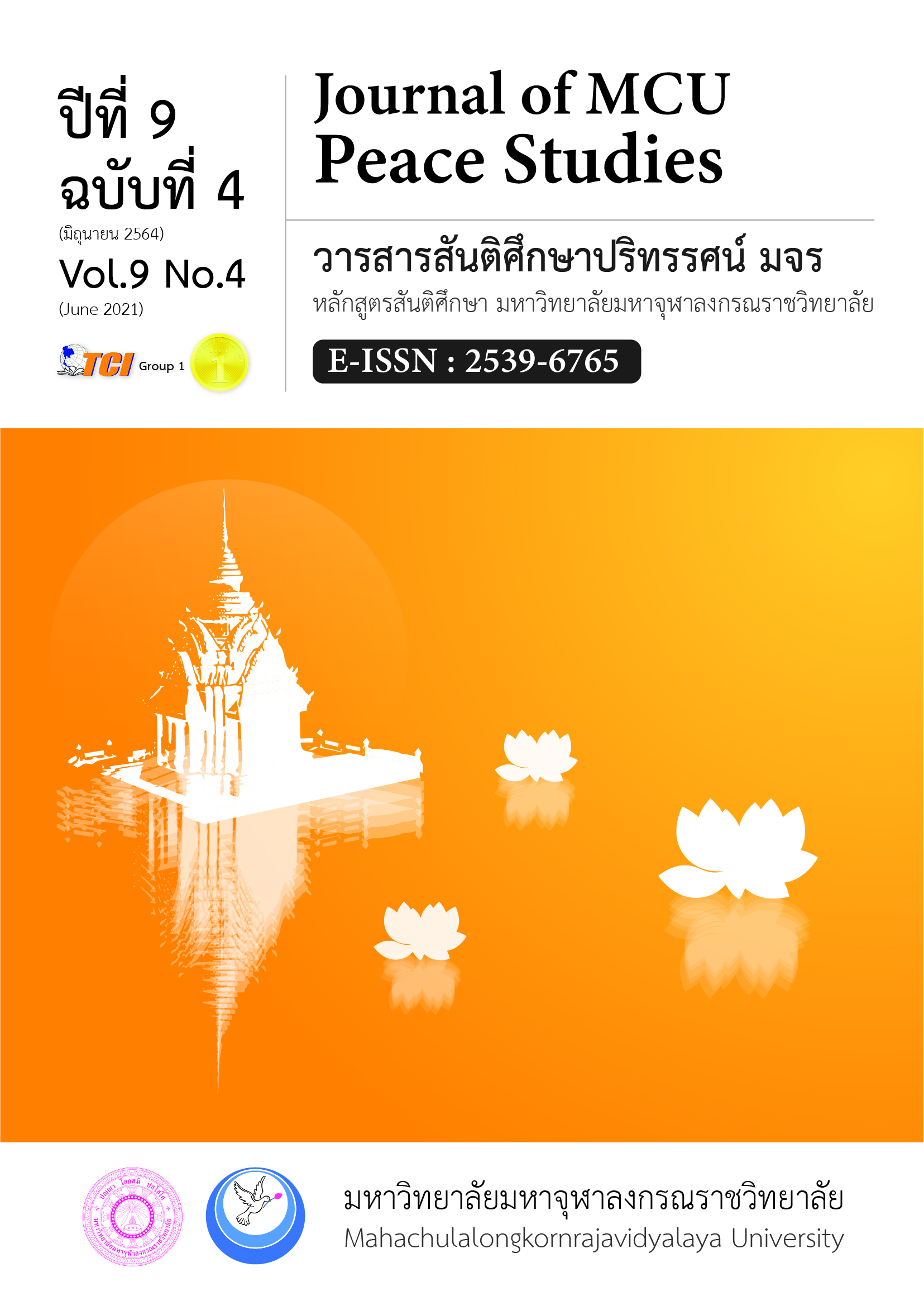การประกอบสร้างความหมายผู้หญิงในชาดกล้านนา
Main Article Content
บทคัดย่อ
บทความวิจัยนี้มีวัตถุประสงค์ 1) เพื่อศึกษาแนวคิดเรื่องการประกอบสร้างความหมายผู้หญิงแบบปิตาธิปไตย และ 2) เพื่อวิเคราะห์การประกอบสร้างความหมายผู้หญิงในชาดกล้านนา ใช้ระเบียบวิธีวิจัยเชิงคุณภาพ โดยผ่านการวิเคราะห์จากเอกสารตัวบทชาดกล้านนา 4 เรื่อง คือ 1) กุสสราชชาดก 2) นางอุทธรา 3) จันทฆาตกชาดก 4) สุพรหมโมกขะหมาเก้าหาง และนำเสนอผลการวิจัยแบบพรรณนาวิเคราะห์ ผลการวิจัยพบว่า 1) การประกอบสร้างความหมายผู้หญิงแบบปิตาธิปไตยจะถูกควบคุมการผลิตและผลิตซ้ำจากมุมมองของผู้ชาย ดังนั้นภาพความเป็นหญิงจึงอยู่ภายใต้อำนาจของผู้ชายที่สามารถเลือกสรร หยิบยกคุณลักษณะที่พึงประสงค์ของผู้หญิงมาผลิตซ้ำและถ่ายทอดให้เป็นที่รับรู้ได้อย่างเป็นธรรมชาติและแนบเนียนเพื่อเป็นการเสริมสร้างความชอบธรรมให้แก่อำนาจชายเป็นใหญ่ 2) ชาดกล้านนาได้ประกอบสร้างความหมายผู้หญิงโดยนำเสนอผ่านภาพแทนผู้หญิงในฐานะต่าง ๆ ดังนี้ (1) ผู้หญิงในฐานะแม่ (2) ผู้หญิง ในฐานะเมีย (3) ผู้หญิงในฐานะสมบัติของผู้ชาย (4) ผู้หญิงในฐานะเพศที่ต้องการที่พึ่งพิง (5) ผู้หญิงในฐานะวัตถุทางเพศ และ (6) ผู้หญิงในฐานะสัญญะของความสกปรก ไม่บริสุทธิ์ จะเห็นว่าการนำเสนอภาพผู้หญิงนั้น มีหลายรูปแบบขึ้นอยู่กับผู้ประพันธ์หรือผู้สร้างสรรค์ว่าจะหยิบยกหรือจัดวางความหมายผู้หญิงอย่างไร ดังนั้นชาดกล้านนาจึงถือเป็นพื้นที่หนึ่งในการประกอบสร้างความหมายและภาพแทนผู้หญิงบางประการแก่ผู้คน ในสังคมล้านนาซึ่งอาจไม่ใช่ภาพสะท้อนแห่งความเป็นจริงเสมอไป
Article Details
ทัศนะและความคิดเห็นที่ปรากฏในบทความในวารสาร ถือเป็นความรับผิดชอบของผู้เขียนบทความนั้น และไม่ถือเป็นทัศนะและความรับผิดชอบของกองบรรณาธิการ ยินยอมว่าบทความเป็นลิขสิทธิ์ของวารสาร
เอกสารอ้างอิง
Akhanit, P. et al. (1998). A Critical Study of Northern Thai Version of Panya-Jataka. Chiang Mai: Chiang Mai University.
Asana, S. (1986). Women in Lanna Literature. (Master’s Thesis). Graduate School: Srinakharinwirot Prasarnmit University. Bangkok.
Athamasar, R. (1988). Folk ideology and status of women. Seminar summary Operations of Northern Women Development at Payap University. 20 February 1988.
Charoenporn, S. (2005). Women and Society in Thai literature in the Bubble Economy. Bangkok: Matichon.
Chongsathitman, C. (1992). Cultural Crisis: The Case of Changing Community Values. Bangkok: Office of the National Culture Commission.
Chotiudompant, S. (2016). Criticism Literary Theory of Western in the Twentieth Century. Bangkok: Chulalongkorn University Press.
Hongsuwan, P. (2012). Legend of Lanna Buddha: Wisdom the Power of Faith and Relationship with Local. Bangkok: The Thailand Research Fund (TRF).
Kaewkhamsaen, D. (2016). The Representation of Lanna Woman in Yasothara Nirvana Literature. Journal of Bailan, 3(1), 1-24.
Kammou, W. (1992). A Comparative Study of Different Versions of Nang Uddhara. (Master’s Thesis). Graduate School: Chiang Mai University. Chiang Mai.
Palarat, L. (2002). Women in Buddhist Philosophy. Bangkok: Chulalongkorn University Press.
Ratana, P. (2013). Creating the image of the northern woman: the impact of tourism development in Thailand. in Chaimuangchun, P., Saensa, P (Eds.). Lanna history mark: Includ academic articles on the occasion of the sixth anniversary of Prof. Saratsawadee-Assoc. Prof.Somchot Angsakul. (pp. 249). BangKok: Eastern Printing House.
Rodsub, N. (2012). Patriarchy: The Reflection of the Inequality between Male and female in Asian society. Journal of Academic, 4(2), 30-45.
Sangkhaphanthanon, T. (2016). Contemporary Literary Theory. Pathum Thani: Nakorn Press.
Santasombat, Y. (2016). Freud and Psychoanalytic Development: From Dreams to Social Theories. (5th ed). Bangkok: Thammasat University Press.
Sirarojananan, M. (2019). Women in Buddhism. (2nd ed). Bangkok: Thammasat University Press.
Sriratanasomboon, C. (2012). The construction of Thai women as objects of desire in contemporary German Writings. In The science of literature is Trisilpa: Theory Aesthetic Social. Bangkok: Sangsanbooks.
Suriyachai, A. (2003). An Analytical Study of Suprommokkha Mah Kao Hang. (Master’s Thesis). Graduate School: Chiang Mai University. Chiang Mai.
Wongthet, P. (2001). Gender and Culture. (2nd ed). Bangkok: Ruenkaew Printing.


